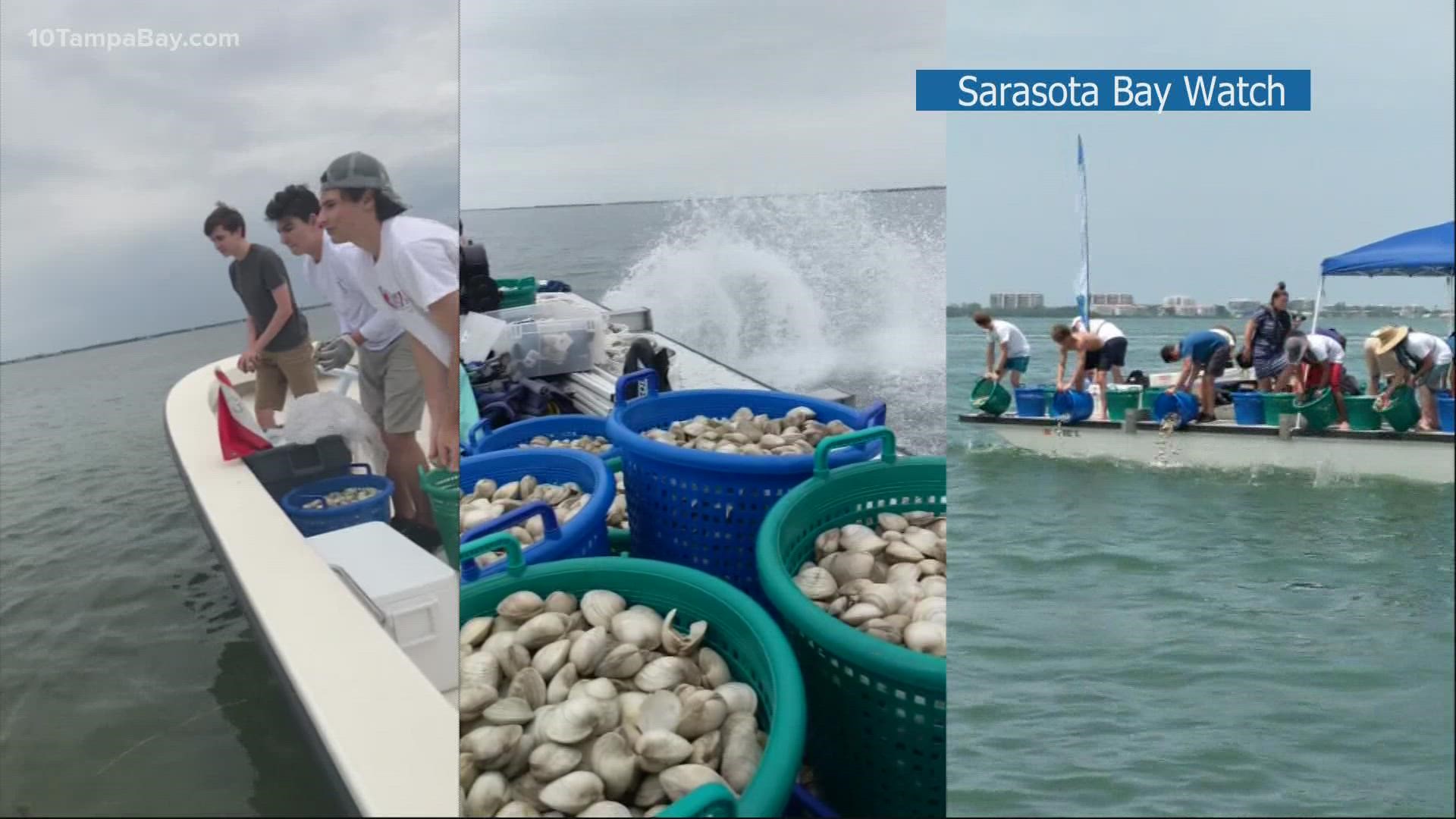SARASOTA, Fla. — The weekend, one group will be dumping more than 100,000 clams into the Sarasota Bay.
Volunteers with the Sarasota Bay Watch have been releasing clams into the bay to help filter the water.
Saturday's clam distribution already has enough volunteers but over the next several weeks they still have 600,000 clams to distribute and are in need of extra hands for several stages of the process.
"We're looking for people with boats that would like to take some baskets of clams out toward designated sites," Ronda Ryan with Sarasota Bay Watch said. "We're looking for boats that will take people out there to help dump those clams. We're looking for people to help on the shoreline to help transfer clams into boats."
The group plans to release around 120,000 clams with the help of volunteers. Ahead of the release, teams would spend up to five hours cleaning, counting, and measuring the clams for survivability and growth this Friday. Sarasota Bay Watch wants to help replenish the clam population in the bay at an accelerated pace in order to keep the water clean and healthy.
"By doing that, we're hoping to slowly clear the water a little bit and by clearing the water, we're hoping that we will improve the amount of sunlight that reaches the bottom of the water and that's where the seagrass is," Ryan said.
Marine biologists have decried the loss of seagrass vegetation as a problem on Florida's East Coast. The loss of seagrass has caused starvation and led to the deaths of more than 20 percent of the Manatee population located in the Indian River Lagoon.
"We don't want to wait till it is apocalyptic and we want to get there and try to hedge the impact right now," Ryan said.
Scientists also said the clams are able to filter up to 20 gallons of water daily and the process helps mitigate red tide.
"The clams, by eating that algae, they're also taking up the excess nutrients like the nitrogen and phosphorus and these are components that fuel what they call harmful algae blooms and that's like the red tide," she said.
Last month, one group of volunteers alone released 55,000 clams near the Field Club in Sarasota Bay. In the last clam release event, volunteers also released a total of 120,000 clams. The group hopes to get 1 million clams into the bay by July. So far volunteers have released around 250,000 clams since the distribution process began in early March.
"We're hoping to boost their populations, where they can handle themselves and they can reproduce, maintain their own populations and do what they do best, which is filtering water," Ryan said.

